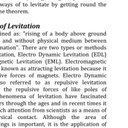A novel triterpenoid isolated from the root bark of Ailanthus excelsa Roxb (Tree of Heaven), AECHL-1 as a potential anti-cancer agent.
Avainsanat
Abstrakti
BACKGROUND
We report here the isolation and characterization of a new compound Ailanthus excelsa chloroform extract-1 (AECHL-1) (C(29)H(36)O(10); molecular weight 543.8) from the root bark of Ailanthus excelsa Roxb. The compound possesses anti-cancer activity against a variety of cancer cell lines of different origin.
RESULTS
AECHL-1 treatment for 12 to 48 hr inhibited cell proliferation and induced death in B16F10, MDA-MB-231, MCF-7, and PC3 cells with minimum growth inhibition in normal HEK 293. The antitumor effect of AECHL-1 was comparable with that of the conventional antitumor drugs paclitaxel and cisplatin. AECHL-1-induced growth inhibition was associated with S/G(2)-M arrests in MDA-MB-231, MCF-7, and PC3 cells and a G(1) arrest in B16F10 cells. We observed microtubule disruption in MCF-7 cells treated with AECHL-1 in vitro. Compared with control, subcutaneous injection of AECHL-1 to the sites of tumor of mouse melanoma B16F10 implanted in C57BL/6 mice and human breast cancer MCF-7 cells in athymic nude mice resulted in significant decrease in tumor volume. In B16F10 tumors, AECHL-1 at 50 microg/mouse/day dose for 15 days resulted in increased expression of tumor suppressor proteins P53/p21, reduction in the expression of the oncogene c-Myc, and downregulation of cyclin D1 and cdk4. Additionally, AECHL-1 treatment resulted in the phosphorylation of p53 at serine 15 in B16F10 tumors, which seems to exhibit p53-dependent growth inhibitory responses.
CONCLUSIONS
The present data demonstrate the activity of a triterpenoid AECHL-1 which possess a broad spectrum of activity against cancer cells. We propose here that AECHL-1 is a futuristic anti-cancer drug whose therapeutic potential needs to be widely explored for chemotherapy against cancer.


